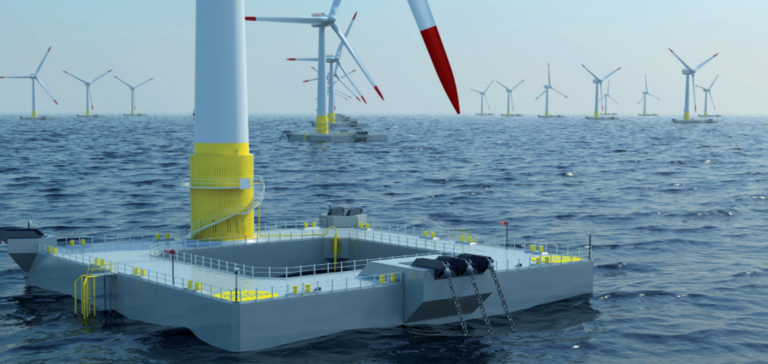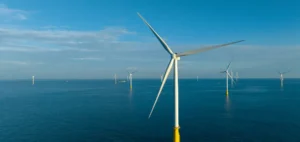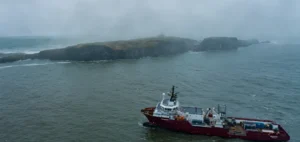Simply Blue Group partners with Marine Power Systems to develop a project proposal for its Pelaflex platform. The partners are submitting this project for the Innovation and Targeted Oil and Gas (INTOG) credit administered by Crown Estate Scotland.
Aid for the development of offshore parks
Simply Blue Group announces a partnership with Marine Power Systems (MPS). The project includes six wind turbines deployed on the floating MPS platform, PelaFlex. It will be located in waters between 60 and 100 meters deep and will deliver a total capacity of 100MW.
The two partners are submitting this project to Innovation and Targeted Oil and Gas for funding credit. The proposed credits are intended to support projects up to a total capacity of 5.7GW. In addition, they drive commercialization and innovation up to a total capacity of 500MW.
The Crown Estate Scotland is managing this initiative. This is part of the Scottish Government’s drive to achieve net zero emissions by 2045. Indeed, the Scottish Government is committed to the decarbonization of oil and gas facilities.
These credits are part of the policy put in place by the British government. This aims to stimulate the development of offshore wind energy, a field in which the United Kingdom is a leader. It translates into the granting of credit rebate campaigns to a limited number of promising projects.
Pelaflex, a platform that seduces the offshore
Simply Blue Group is one of the leading developers of floating wind turbines. The company has over 10GW of floating offshore wind projects under development worldwide. This latest collaboration is part of the Nomadic Offshore Wind project, launched earlier this year.
As part of this project, MPS appears as a preferred technology partner thanks to its Pelaflex platform. Indeed, the design of the platforms is integrated on an industrial scale. Thus, the design reduces costs while maximizing local economic benefits.
Indeed, the platform is composed of 10 metal pieces divided into 4 distinct parts. Their production is low cost and their design allows for modularity. This technology also simplifies the recycling of components and limits the environmental impact thanks to its live docking points.
Sam Roch-Perks, CEO of the Simply Blue Group, says:
“Marine Power Systems offers the most advanced floating technology in the UK, which we see as a good complement to our Nomadic Offshore Wind project. We look forward to working with this dynamic team.”
This announcement follows that of Marine Power Systems partnering with WavEC to deploy its technology. The floating and modular offshore wind platform is located in Viana do Castelo, in the northern region of Portugal.





















